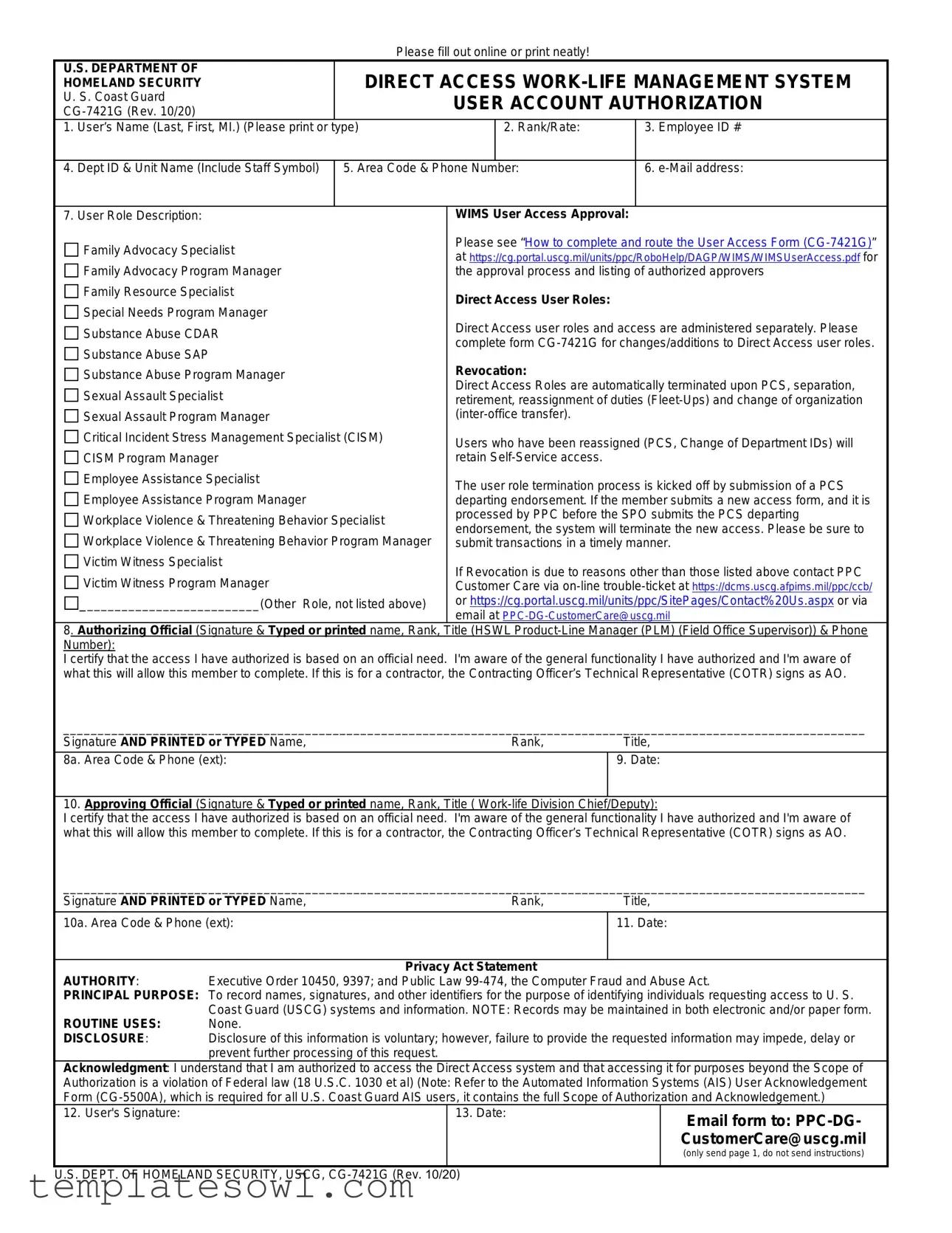What is the purpose of the CG-7421G form?
The CG-7421G form is designed for U.S. Coast Guard personnel to request user access to the Direct Access Work-Life Management System. It ensures that only authorized individuals can access sensitive information related to various work-life programs.
Who can fill out the CG-7421G form?
Only Coast Guard personnel assigned to specific duties within certain work-life program areas may fill out this form. These areas include family advocacy, substance abuse, sexual assault, and others. It's intended for those who need access as part of their official responsibilities.
What information is required to complete the form?
To properly complete the CG-7421G form, the user needs to provide their name, rank or rate, employee ID, department ID and unit name, phone number, email address, and specific user role information. It is important to ensure clarity and accuracy when filling in these details.
What happens after the form is submitted?
After the form is completed, it must be signed by the user and the appropriate authorizing and approving officials. The signed form is then submitted electronically or via email to the HSWL Service Center for review. Once approved, the user's access to the system will be granted by PPC Topeka.
Can access be revoked?
Yes, access to the system can be revoked automatically upon certain actions like PCS (Permanent Change of Station), separation, retirement, and reassignment of duties. If revocation is for other reasons, the individual should contact PPC Customer Care for guidance.
What if the user experiences an issue with the access request?
If an issue arises during the access request process, users should create an online trouble ticket through the Customer Care portal or reach out via email. There are resources available to help resolve any problems that may occur.
How can one ensure a quick processing time of the form?
To expedite processing, ensure that the form is filled out completely and accurately. Submitting it in a timely manner is crucial, especially before any official endorsement actions that might interfere with access approvals.
What is the importance of the Privacy Act Statement included in the form?
The Privacy Act Statement is essential for informing users about how their information will be used. It explains the legal basis for collecting this data and emphasizes that providing personal information is voluntary, although it may impact processing if not submitted.


